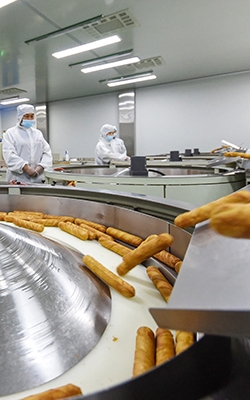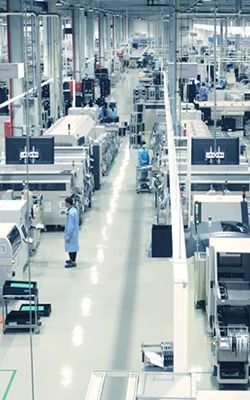The SISCO process calibrator is a portable, digital process calibration instrument designed specifically for various calibration tasks in the field and laboratory. This process calibrator integrates high-precision measurement and output functions, with a maximum accuracy of 0.01%. It can handle multiple signal types, including voltage, current, temperature, frequency, and resistance.

Handheld process calibrator signal generator
- Multiple signal outputs
- Accuracy can reach 0.01% FS
- 64 sets of commonly used data storage
- Communication interface RS232

Characteristics of a digital process calibrator
- Measurement/output synchronization
- Accuracy can reach 0.01% FS
- Intelligent socket flashing prompt
- Intelligent automatic oblique wave step output
Applications
SISCO process calibrators are widely used in various industries, including manufacturing to ensure the accuracy of sensors in automated systems. Pharmaceuticals: maintaining compliance with strict temperature and pressure regulations. Energy and utilities testing electrical and pressure instruments in power plants and pipelines. Aerospace verifying flight instruments and environmental control systems. Food and beverage to ensure accurate temperature control in processing and storage.
 Papermaking
Papermaking
 Food
Food
 Light industry
Light industry
 Electric power
Electric power
| Model | SISCO-OHR-A00 | ||
| Function | Measure | Export | |
| DCV | -11~11V | -1~11V | |
| DCmV | -110~110mV | -10~110mV | |
| DCmA | -24~24mA | 0~24mA | |
| Frequency | 1Hz~15kHz | 1Hz~50kHz | |
| Resistance | 0~3200Ω、0~500Ω | 1~3200Ω | |
| Thermocouple | J, R, S, B, N, K, T, E | ||
| Thermal resistance | Cu50, Cu100, Pt100, Ba1, Ba2 | ||
| Other functions | Manually set cold end, current loop, step output, ramp output, etc | ||
| Voltage and Current Signal Output | |||
| Signal type | Resolution | Accuracy: Range%+Reading% | Notes |
| -10~110mV | 0.002mA | ± (0.015%+0.010%) | Maximum load current 1mA |
| -1~11V | 0.002V | ± (0.015%+0.010%) | Maximum load current 1mA |
| 0~24mA | 0.001mA | ± (0.01%+0.010%) | Maximum load resistance 800 Ω |
| Temperature coefficient: 0 ℃~18 ℃, 28 ℃~40 ℃, (0.001% output+0.003% full-scale)/℃ | |||
| Resistance Signal Output | |||
| Signal type | Resolution | Accuracy: Range%+ohm | Notes |
| 1.5~500Ω | 0.01Ω | ± (0.025%+0.1Ω) | Excitation current ≤ 2mA |
| 1.5~3200Ω | 0.1Ω | ± (0.5%+1.5Ω) | Excitation current ≤ 2mA |
| Temperature coefficient: 0 ℃~18 ℃, 28 ℃~40 ℃, (0.015% full-scale)/℃ | |||
| Frequency Signal Output | |||
| Signal type | Resolution | Accuracy: Range%+ohm | Notes |
| 1~10Hz | 0.001 Hz | ± 0.05% | / |
| 10~100Hz | 0.01 Hz | ± 0.05% | / |
| 100~1000Hz | 0.1 Hz | ± 0.25% | / |
| 1000~50000Hz | 1 Hz | ± 0.5% | / |
| Output waveform: square wave, with adjustable dip ratio. Amplitude: 2V~10V, P-P. DC bias:- 0.1V. Maximum load current: 1mA. Amplitude: 2V~10V, P-P. DC bias:-0.1V. Maximum load current: 1mA. | |||
| RTD Output | |||
| Signal type | Range | Resolution | Accuracy: Range%+℃ |
| Pt100 | -200~800 | 0.1 | ± (0.025%+0.15℃) |
| Ba1 | -200~600 | 0.1 | ± (0.025%+0.15℃) |
| Ba2 | -200~600 | 0.1 | ± (0.025%+0.15℃) |
| Cu50 | -50~150 | 0.1 | ± (0.035%+0.25℃) |
| Cu100 | -50~150 | 0.1 | ± (0.025%+0.15℃) |
| Allowable excitation current: ≤2mA | |||
| TC Signal Output | |||
| Signal type | Range | Resolution | Accuracy: Range%+℃ |
| J | -200~0℃ | 0.1 | ± (0.02%+0.4℃) |
| 0~1200℃ | ± (0.02%+0.3℃) | ||
| K | -200~0℃ | 0.1 | ± (0.025%+0.6℃) |
| 0~1370℃ | ± (0.02%+0.3℃) | ||
| T | -200~0℃ | 0.1 | ± (0.02%+0.8℃) |
| 0~400℃ | ± (0.02%+0.5℃) | ||
| E | -200~0℃ | 0.1 | ± (0.02%+0.6℃) |
| 0~950℃ | ± (0.02%+0.4℃) | ||
| R | -20~0℃ | 0.1 | ± (0.02%+1.8℃) |
| 0~500℃ | ± (0.02%+1.4℃) | ||
| 500~1750℃ | ± (0.02%+1.2℃) | ||
| S | -20~0℃ | 0.1 | ± (0.02%+1.8℃) |
| 0~500℃ | ± (0.02%+1.2℃) | ||
| 500~1750℃ | ± (0.02%+1.2℃) | ||
| B | 400~800℃ | 0.1 | ± (0.02%+1.5℃) |
| 800~1000℃ | ± (0.02%+1.2℃) | ||
| 1000~1800℃ | ± (0.02%+1.2℃) | ||
| N | -150~0℃ | 0.1 | ± (0.02%+0.5℃) |
| 0~1300℃ | ± (0.02%+0.5℃) | ||
| Cold end manual compensation | |||
Details

Q1: What is a process calibrator?
A1: A process calibrator is a multifunctional device used to test, troubleshoot, and calibrate various process instruments in industrial settings. It is commonly used in industries like manufacturing, oil and gas, chemical processing, power generation, and more—essentially anywhere precise control and measurement of physical parameters (like pressure, temperature, current, voltage, frequency, and resistance) are required.
Q2: What Does a Process Calibrator Do?
A2: A process calibrator can:
Source signals: It can simulate input signals (e.g., 4-20 mA current loops, voltage, thermocouples, RTDs) to test the response of instruments. Measure signals: It reads and displays the output from sensors or transmitters to verify their accuracy. Simultaneously source and measure: Many calibrators can do both at once—for example, outputting a 4-20 mA signal to a device while also reading the mA feedback from a loop. Loop power: Some provide loop power to power up field transmitters during calibration.
Q3: How does a process calibrator work?
A3: A process calibrator is a multifunctional test tool used in industrial settings to simulate, measure, and source various process signals to calibrate and troubleshoot instruments.
- Simulation (Sourcing Mode): The calibrator mimics a sensor or transmitter: For example, it can output a 4-20 mA signal to test a control system input. It can simulate a thermocouple or RTD to test temperature controllers.
- Measurement Mode: The calibrator measures signals coming from sensors or transmitters: It can measure the output of a 4-20 mA transmitter. Or it can read thermocouple or RTD signals to verify temperature readings.
- Loop Power Supply: Many calibrators can provide loop power (usually 24V DC) to power a 2-wire transmitter during testing—handy when you’re not connected to the control system.
- Documentation and HART/Fieldbus Communication (in advanced models): Some calibrators support automatic documentation of calibration results. Others can communicate with smart transmitters (e.g., HART protocol) to adjust or troubleshoot them.
Tips: How to use a handheld digital process calibrator correctly?
- Understand the basic functions: Before use, read the user manual carefully to ensure that you understand all the basic functions and operation buttons of the calibrator. This will help you perform calibration work more efficiently.
- Regular calibration: To ensure the accuracy of the calibrator, self calibration should be conducted regularly or sent to a professional institution for calibration. The calibration cycle can be adjusted according to the frequency of use and environmental conditions.
- Proper power management: Use a suitable power adapter or battery and ensure that operations are carried out with sufficient power. Replace the battery or charge it in a timely manner when the battery is low to avoid interruption of the calibration process or data loss.
- Training and Education: Regularly attend relevant training courses to maintain an understanding of the latest calibration techniques and operating methods, and improve your professional level.
Thank you for buying industrial test and measurement equipment on SISCO.com, all products sold by SISCO and the partner cover a 12 months warranty, effective from the date of receiving the products.
What is covered?
SISCO is responsible for providing free spare parts, and free technical support to assist the customer to repair the defective products until the problem is solved.
What is not covered?
- Product purchased from anyone other than a SISCO store or a SISCO authorized reseller.
- Expendable parts.
- Routine cleaning or normal cosmetic and mechanical wear.
- Damage from misuse, abuse or neglect.
- Damage from use of parts other than SISCO approved.
- Damage from use outside the product’s usage or storage parameters.
- Damage from use of parts not sold by SISCO.
- Damage from modification or incorporation into other products.
- Damage from repair or replacement of warranted parts by a service provider other than a SISCO authorized service provider.
- Damage caused by the application environment not meeting the product usage requirements and the failure to perform preventive maintenance.

